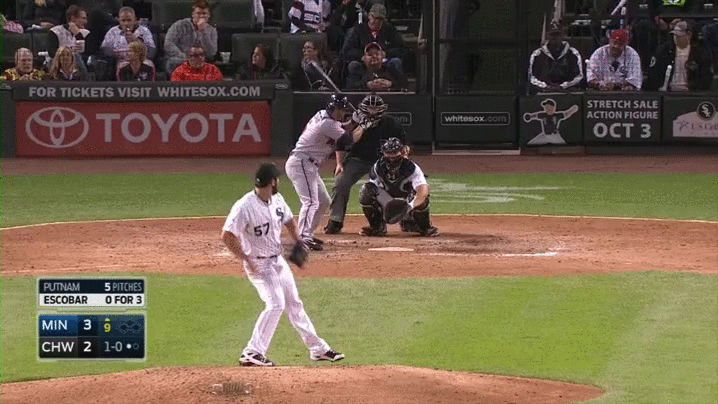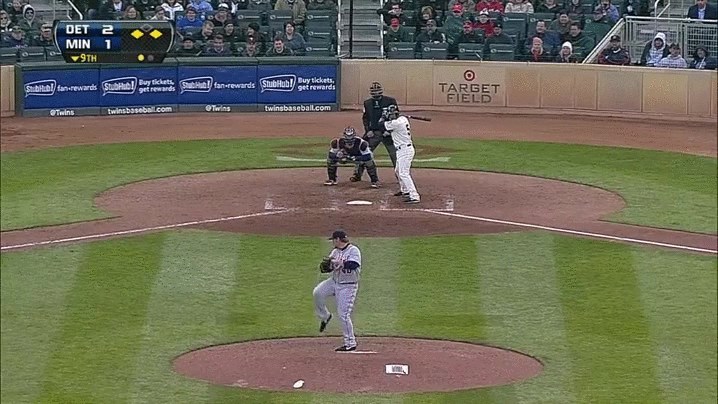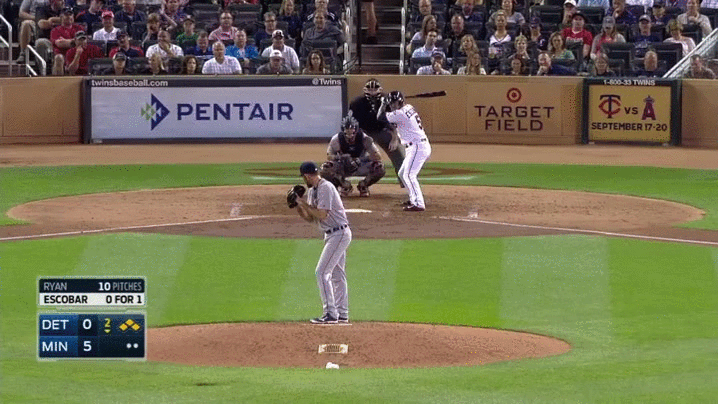Eduardo Escobar's emergence in the Minnesota Twins' lineup as an offensive threat is probably unanticipated but as a hitter who popped off 35 doubles a season ago, it should not be wholly unexpected either. Still, there is something crazy about seeing Escobar's name among the elite shortstops when it comes to offensive production.
After hitting .269/.318/.358 in a little over 650 minor league games, the Twins' switch-hitting middle infield has carved himself out a sudden reputation as an offensive minded player. According to ESPN's database, Escobar is among the top shortstops when it comes to batting average (2nd), on-base percentage (2nd), and slugging (4th). Over the last 30 days, Escobar has even been out-producing Miguel Sano. While Sano has hit a beastly .270/.381/.606, Escobar has mashed an unbelievable .351/.386/.691 in that stretch.
There is no question that Escobar's contributions have been a welcomed bright spot to a position that was completely punchless over the season's first half. Where did this offense come from and can he maintain this level of production?
When the Twins acquired Escobar in the Francisco Liriano trade in 2012, the response was overwhelmingly m'eh. Baseball America's Matt Eddy noted that while scouts loved his defensive talents, he had "farther to go with the bat". His glove work and ability to play multiple positions earned Escobar his first trip to the majors with the Chicago White Sox. In a little over 100 plate appearances spread over two seasons, Escobar failed to hit for average, power or get on base at a replacement level clip. So it is understandable to see why prospectors and analysts had little faith that the Venezuelan would be able to contribute as a regular.
Some observers noted Escobar's occasional gap power as promise but his overall approach in the minors had been to make contact, put the ball in play and use the opposite field. Starting in 2014, Escobar showed a higher tendency to pull the ball from both sides of the plate, leading to an increase in extra-base hits. Last season, Escobar upped his extra-base hit totals, popping off for 35 doubles and adding another six home runs. What was interesting about the distribution of those extra base hits a year ago compared to the ones he's hitting now is that in 2014, the majority of his extra bases came on balls that hugged the foul lines. This season, Escobar is showing much more gap power.

Escobar has not made too many wholesale changes to his swing over his professional career but the biggest difference is that he is swinging more aggressively. From the left side of the plate, what jumps out is that he is loading his hips more (turning the front leg in) prior to the stride forward. That side stays closed longer and allows him to use his lower half. Additionally, he stays down with his top half, allowing for a solid swing plane and bat path in order to drive balls down in the zone.
2012

2013









